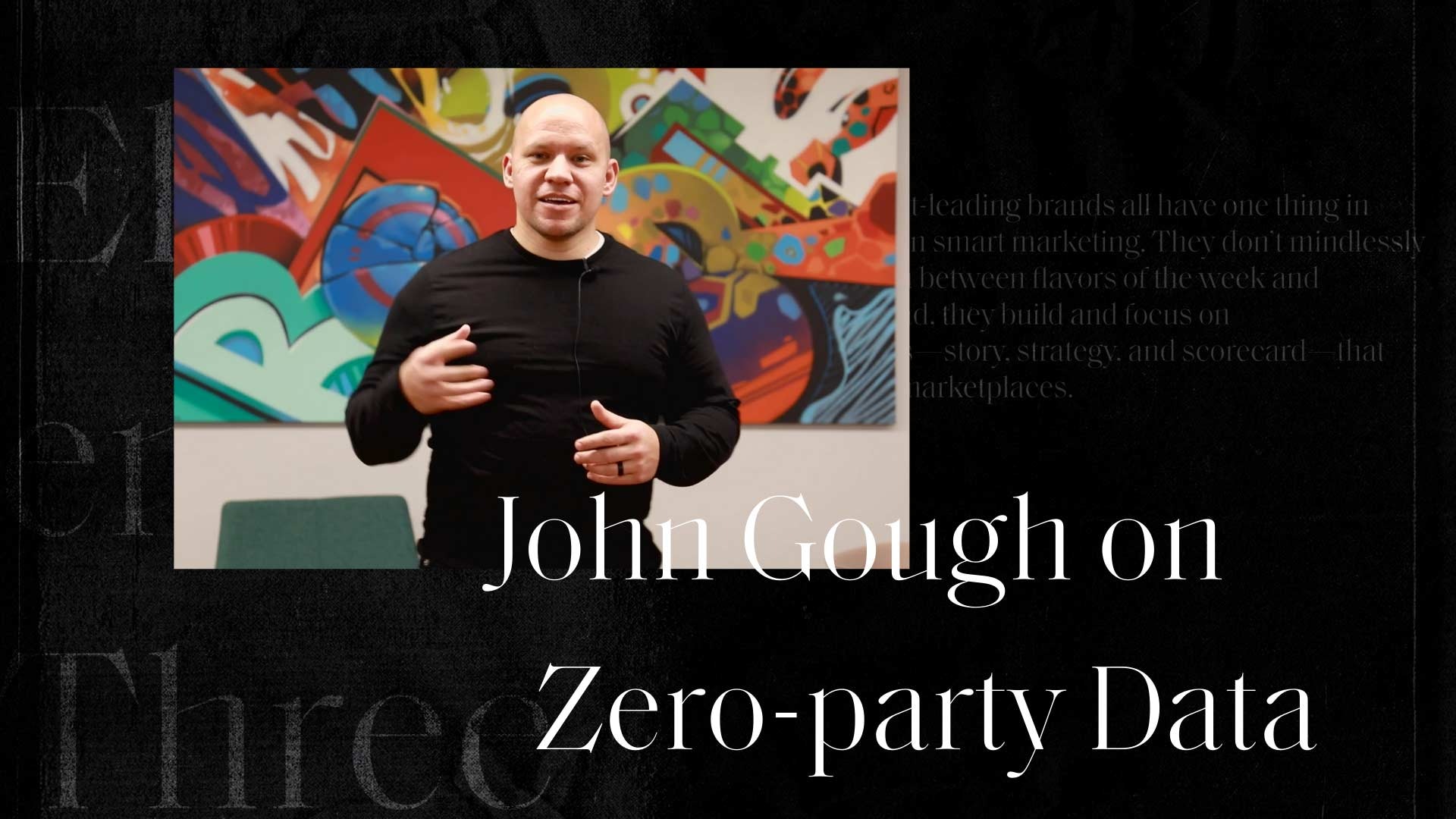If you’ve been paying attention to the changes in the ways that digital marketers are using data over the past year and a half or so, you’ve likely been exposed to a new term: zero-party data. As third-party cookies have gone by the wayside and updates to operating systems like iOS 15 have shut marketers out from information they’ve grown accustomed to having, adjustments have become necessary, and an increased focus on zero-party data is one part of that process.
So, what exactly is zero-party data, and how can it help marketers get to know their customers better? In this video, Senior Director of Web and Digital Strategy John Gough dives in.
What is zero-party data?
Zero-party data is information that a marketer gets directly from a customer, things that customers tell explicitly. It exists in contrast to first-party data, which is all the things that a marketer indirectly observes about a customer through their actions.
Here’s a simple example to make the distinction more clear. Say you’re selling jackets. You see a prospective customer wearing a brown jacket, and through that observation you infer that they love brown jackets—therefore, you should concentrate on selling them brown jackets over black jackets or denim. That’s an example of first-party data; you’re observing the customer’s actions and making determinations based on what you’re seeing. But there’s no guarantee that’s the right answer. Maybe that person hates that jacket, but their lucky jean jacket burst a seam and is getting fixed, so they had to brave the elements in a jacket that was a gift from a style-impaired grandmother.
On the other hand, you could simply ask the person what kind of jacket they love. They might admit that the brown jacket they’re wearing right now isn’t their style, or they might tell you they only wear brown jackets. Either way, with zero-party data you know the truth, straight from the source.
As you might guess, zero-party data can be a tremendously powerful tool for marketers as we try to personalize a buying experience for customers. So how can a marketer identify and implement zero-party data? There are three steps:
- Identify the moment
- Gather the information
- Personalize the experience
Identify the moment
Take a look at your current customer journey. Where in that process would it help you to know more? Where are the points in the journey where, if you had a little more information about what your customer is thinking or feeling, you could improve the buying process for them? What do you need to know from your customers to make things go more smoothly for them?
If you can identify these moments where things get sticky because of a lack of information, it’s pretty simple to extrapolate what information you need—and, therefore, the questions you need to be asking your audience.
Gather the information
Once you’ve determined what you want to learn, it’s time to ask the questions to get you there. This doesn’t necessarily have to be anything as robust or as intensive as a full brand research project—you probably won’t need to hold focus groups or anything like that. More often than not you can simply use the platforms you already have at your disposal to get the answers you want.
For example, if you have email lists that you regularly communicate with, consider a send that includes a short survey, or even simply building a survey into one of the emails you’d be sending already. You could also leverage your website. A popup on certain pages, or a chatbot, or contact forms that already drive engagement could all be tools you could employ to talk to your existing audience.
What do they think and feel about the sticking point you want to know more about? It’s as simple as asking the question in places you’re already communicating with your customers.
Personalize the experience
Once you know what you need to know, it’s time to implement that new knowledge in your purchase process. Bring the information you’ve gotten from your audience into your CRM. Whether you’re using HubSpot, Salesforce, or something else entirely, this should be the place you’re storing customer data and using it to personalize experiences already. You’re just adding to that bank of knowledge.
This implementation process might sound more complicated than it really is. Really what it amounts to is putting the answers to these questions in front of the people who are asking them. If part of your audience wants to learn a specific thing—for instance, there’s something about your product they’re confused about, or a common misconception they tend to hold—use the tools at your disposal to make that information available to them. Perhaps you build an email workflow that answers their questions in a personalized fashion. You could also feed this new data back into the sales team, so they can make sure to share in conversations with prospects.
Whatever you’ve identified within the customer journey that you could do better, that’s the thing that you’re trying to build back into your CRM or sales process.
Give your customers what they want
Put together, these three steps make it much easier for digital marketers to personalize the buying process for the audiences your business is selling to. And it’s really as simple as asking people what they really want, and then providing that thing. As digital marketing continues to evolve, it can seem more and more complex from the outsider’s perspective. But it certainly doesn’t have to be.





